How to make curry sauce with coconut milk and curry powder. Enjoy it with chicken, fish, vegetables, tofu, lamb, pork, seafood and more.
Go straight to the Recipe Card or
Read on for step by step pictures, video demo and relevant tips (2 mins)
About This Curry Sauce Recipe
You can make this curry sauce and simply ladle it over a variety of cooked proteins, vegetables, lentils or tofu. Alternatively, you can simmer seared chicken or pork in it until cooked through and succulent. Fish, shrimp or tofu can be added to the simmering sauce and be completely cooked through by the time the sauce thickens.
Overall you have many options on how to use it and this versatility along with the simplicity of preparing it easily makes the recipe an essential one to keep in your pan sauce arsenal.
Below in the step-by-step pictures and demonstration video we show how easy it is to prepare chicken cutlets along with the sauce.
Ingredients for Coconut Curry Sauce
Curry powder or curry paste. Use yellow curry powder or Madras curry powder depending on your preference. You can add a pinch of cumin if you want stronger savory notes or garam masala for extra spicy sweetness.
Ghee. To sauté the diced onion. Substitute with neutral cooking oil if you don’t have clarified butter on hand.
Onion. The ultimate aromatic vegetable to impart sweet and savory goodness to the sauce. If you’d like to add a bit of garlic taste mince a couple of garlic cloves and saute them towards the end of the time you saute the onion (see below). You can also grate a bit of fresh ginger right over the onion.
Coconut milk. We recommend full fat coconut milk for richer flavor and consistency, especially if preparing a dry meat such as chicken breast or pork loin cutlets with the sauce.
Chicken cutlets. Even though below we demonstrate the preparation with chicken cutlets you can use tenders, chicken breast cut into long strips or cubes, or boneless chicken thighs and cook them in the exact same manner.
Salt & pepper. To season the chicken meat.
MADRAS CURRY POWDER vs YELLOW CURRY POWDER: These two spice blends are very similar in composition and flavor and both contain turmeric which gives them and dishes prepared with them a rich yellow color. The key difference is in their spiciness. While yellow curry powder is very mild and sweet Madras curry blend has a good amount of heat (but less than red curry blends). The heat in Madras comes from higher content of powdered chili peppers and brown mustard seeds than you will find in yellow curry powder.
NOTE: Something most people don’t realize is that the curry powder blends sold in the Western world are not traditional Indian blends and are not used in the diverse regional cooking of India in the exact composition(s). The word curry came as a derivation from the Tamil word kaṟi which means sauce for rice and was applied to the spice blends British traders bought from the Indian subcontinent in the seventeenth century. (Indian people call spice blends masala). Both yellow and Madras curry blends were created by the British to approximate the complex flavors in Indian cuisine.
How to Make Curry Sauce
- Sear. In a preheated skillet sear the chicken cutlets (or chicken thighs or pork cutlets) on both sides. This is to conjure up flavors via the Maillard reaction. If making only the sauce, skip this step.
- Sauté. Cook the diced onion until soft, stir in the curry powder and cook for another minute before adding the coconut milk.
- Reduce. Bring the sauce to simmer and let it reduce over a few minutes. (If only making sauce, reduce to desired final consistency and skip next step).
- Finish. Once the sauce had thickened add back the chicken cutlets and simmer them together for a few minutes until the chicken is cooked through (should be pretty quick since cutlets are thin and already seared).
How Much to Reduce Curry Sauce
When making this curry sauce recipe for chicken or for other protein ideally you will reduce the sauce by about a quarter of the original volume before you return the seared meat to the pan. This is sufficient to concentrate the flavors. Once the chicken is added back simmer only until the meat is cooked through. If you wish to have a thicker sauce you can reduce it by about a third before you add back the chicken/other protein.
Generally, since most of the time there will be basmati or jasmine rice involved as a side dish a sauce that is not too thick will serve you better as you will have more of it to ladle over the rice.
If you would rather scoop it up with pieces torn from naans you can thicken it a bit more.
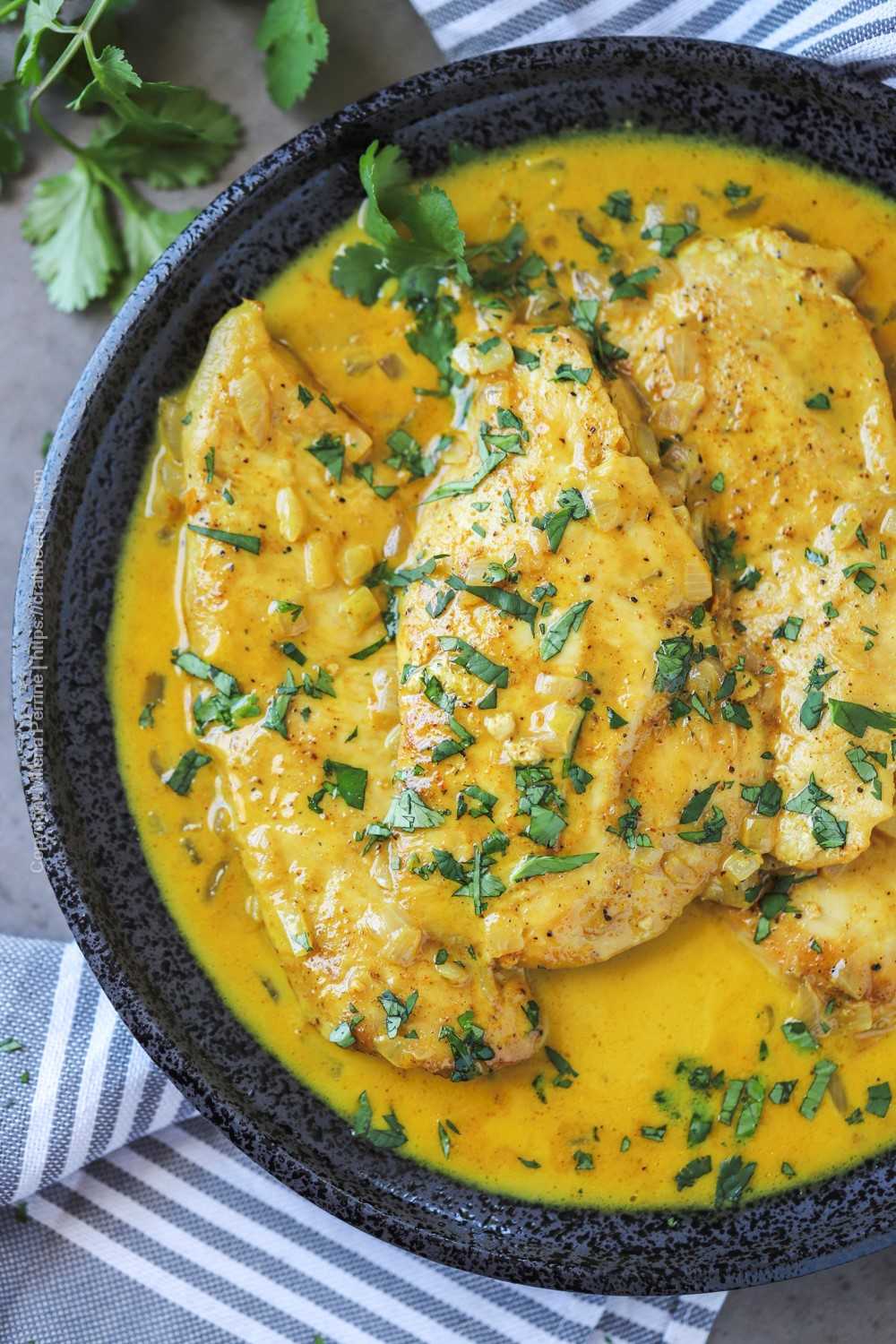
Garnish the curry chicken with cilantro.
Make It a Vegetable Curry
For a vegetarian curry simply simmer a few veggies in the sauce while it is reducing. Most of them you won’t even need to cook separately beforehand, here are a couple of ideas:
- Carrots. We like to use a vegetable/potato peeler to peel thin ribbons from the entirety of two average sized carrots – the thin shavings cook incredibly fast in the simmering sauce.
- Peas. Frozen peas added to the sauce also cook really fast.
- Spinach. Add chopped fresh spinach or a couple of handfuls of baby spinach leaves to the curry sauce (towards the end of the simmering time as spinach wilts quickly).
- Green beans. Use thinner haricot verts, sliced in half. You can add these directly to the sauce and let them simmer or briefly blister them in the pan before you sauté the onion and then add them back to the sauce once it begins to simmer.
- Thinly sliced celery. Sauté thinly and diagonally cut celery ribs along with the onion in the beginning, then proceed with the recipe.
- Cauliflower. Sauté small florets with the onion, proceed with the recipe. Alternatively, roast florets and add them to the curry sauce once it has reduced to your liking.
- Bell/sweet peppers. Cut into strips, sauté along with the onion and proceed with the recipe. Yellow or red pepper work best.
You Might Enjoy
Scallion Ginger Salsa
Currywurst + How to Make Curry Ketchup
Roasted Rutabaga with Curry
Video Demo
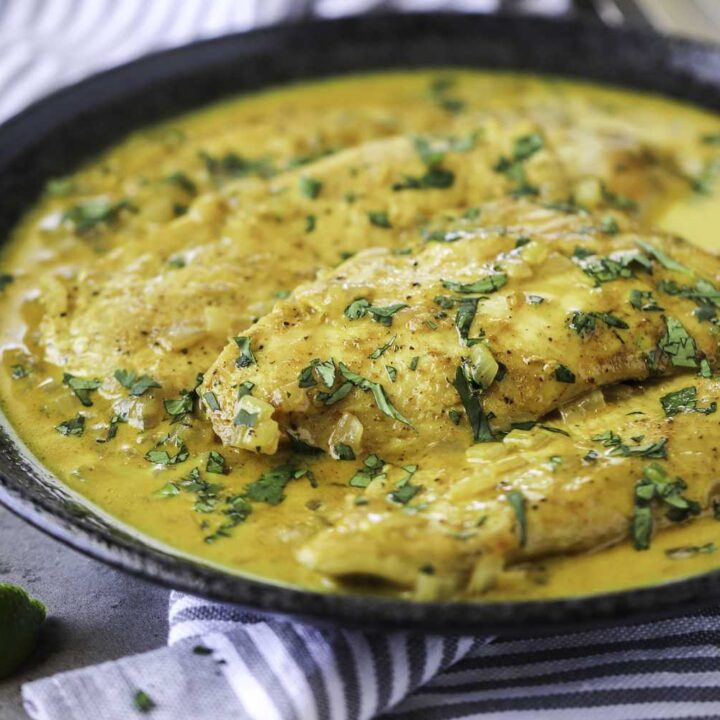
Simple Curry Sauce Recipe for Chicken, Vegetables, Fish, Tofu, Pork & More
Easy curry sauce recipe for chicken, vegetables, lamb, pork, fish and more. Simple to prepare with Madras or yellow curry powder and coconut milk as the main ingredients.
Ingredients
CURRY SAUCE
- 1 tbsp ghee (clarified butter)*
- 1 onion, diced small
- 1 heaping tbsp yellow curry powder or Madras curry powder**
- 14 oz coconut milk***
CHICKEN
- 4 chicken cutlets
- salt and pepper, to taste for seasoning
Instructions
CURRY SAUCE ONLY
1. Heat a pan over medium and add the ghee. Sauté the diced onion until soft and translucent, about 4-5 minutes.
2. Stir in the curry powder, cook for another minute. Add the coconut milk, stir and bring to simmer. Reduce the sauce to desired thickness (by 1/4 up to 1/3****) and remove from the heat. Once away from heat it will thicken a bit more. Spoon over rice, veggies, cooked proteins and enjoy.
CHICKEN IN CURRY SAUCE
1. Season the chicken cutlets with salt and pepper. Heat a skillet over medium-high, add the ghee and sear the cutlets on both sides, working in batches. About 1 minute per side is enough. Remove from skillet and set aside.
2. Reduce the heat to medium, sauté diced onion in the ghee remaining in pan until softened, about 4-5 minutes. Stir in the curry powder and cook for another minute, then add the coconut milk. Stir, bring to simmer and allow the sauce to thicken a bit, about 4-5 minutes. Add the seared chicken cutlets back to the skillet and simmer together until the sauce reduces a bit more and the cutlets are cooked through.
3. Serve over Basmati or Jasmine rice, garnished with cilantro.
Notes
*Substitute with unsweetened coconut oil or neutral cooking oil.
**The two are very similar, Madras is spicier; consult body of post for more info.
***This is about the standard can of coconut milk. Full fat will create a richer and more delicious sauce.
****To clarify, reducing by 1/4 will leave you with 3/4 of original volume, by 1/3 will leave you with 2/3 of original volume.
To make vegetable curry dish: consult the body of the post just above this recipe card for ideas on suitable options and how to add them to the curry sauce for best results.
Recommended Products
We are affiliates for Amazon and other vendors and qualifying purchases you make support our blog at no cost to you.
Nutrition Information:
Yield: 4 Serving Size: 1Amount Per Serving: Calories: 507Total Fat: 33gSaturated Fat: 23gTrans Fat: 0gUnsaturated Fat: 8gCholesterol: 156mgSodium: 373mgCarbohydrates: 21gFiber: 2gSugar: 2gProtein: 33g
Nutritional data is for curry sauce with chicken cutlets.

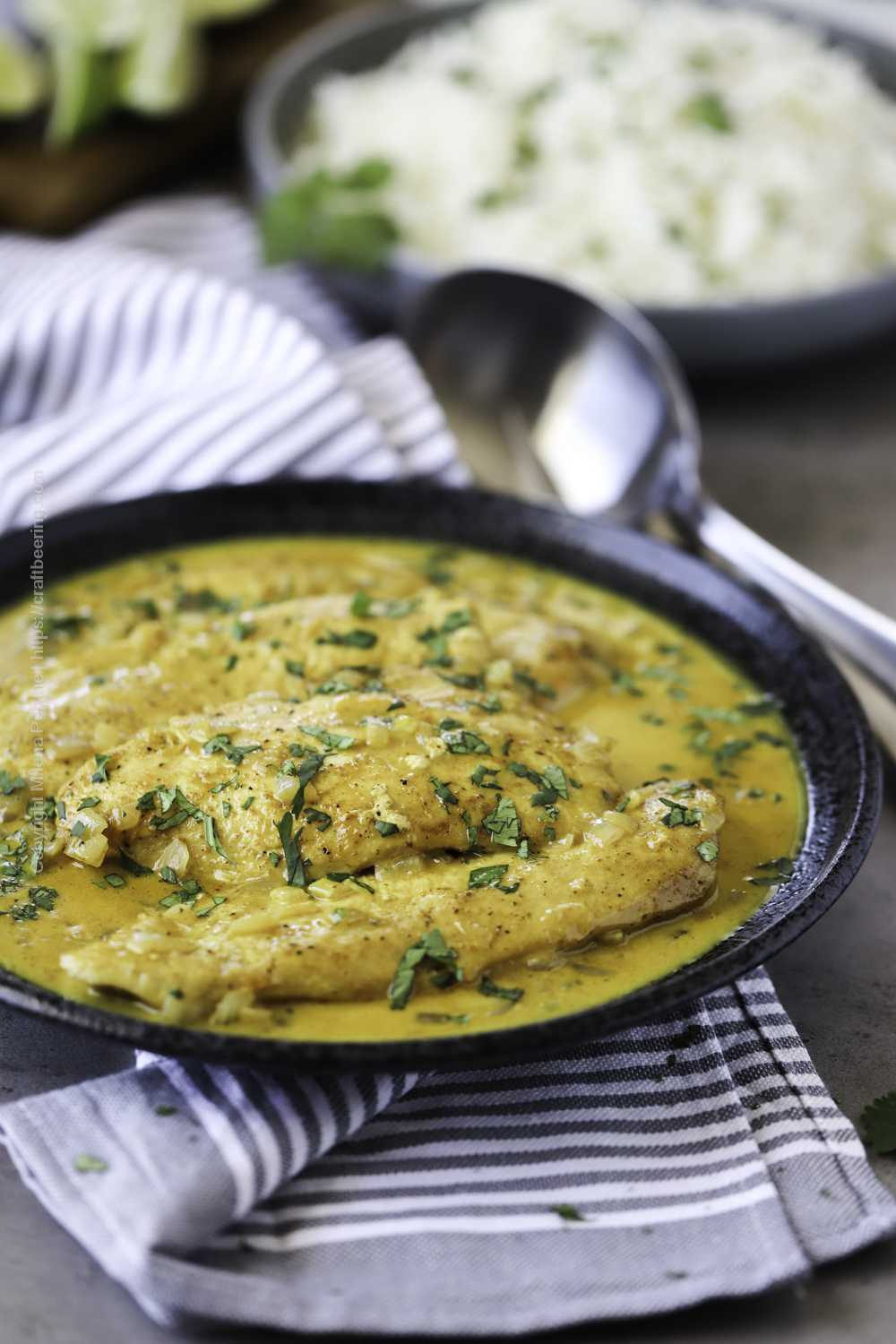
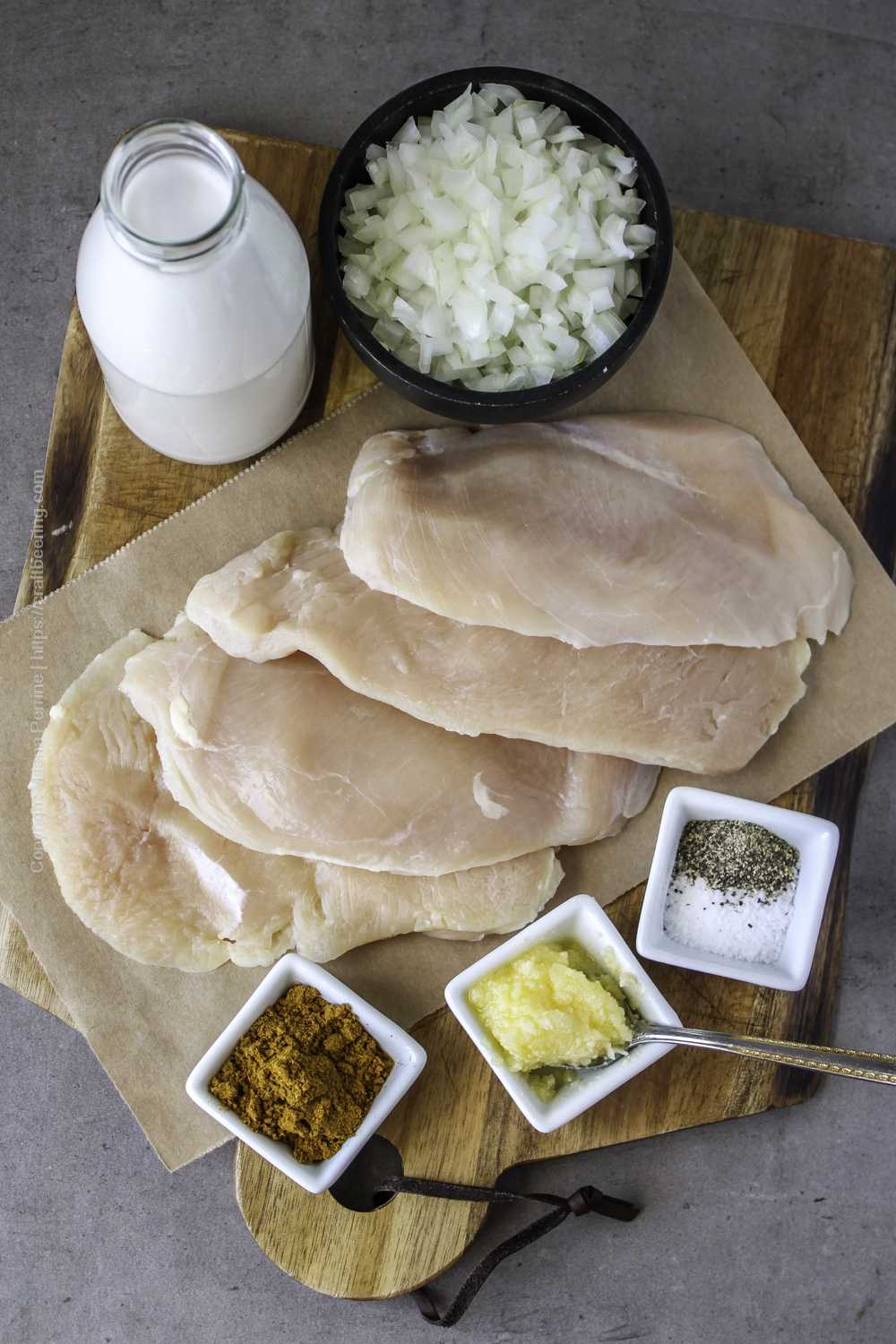
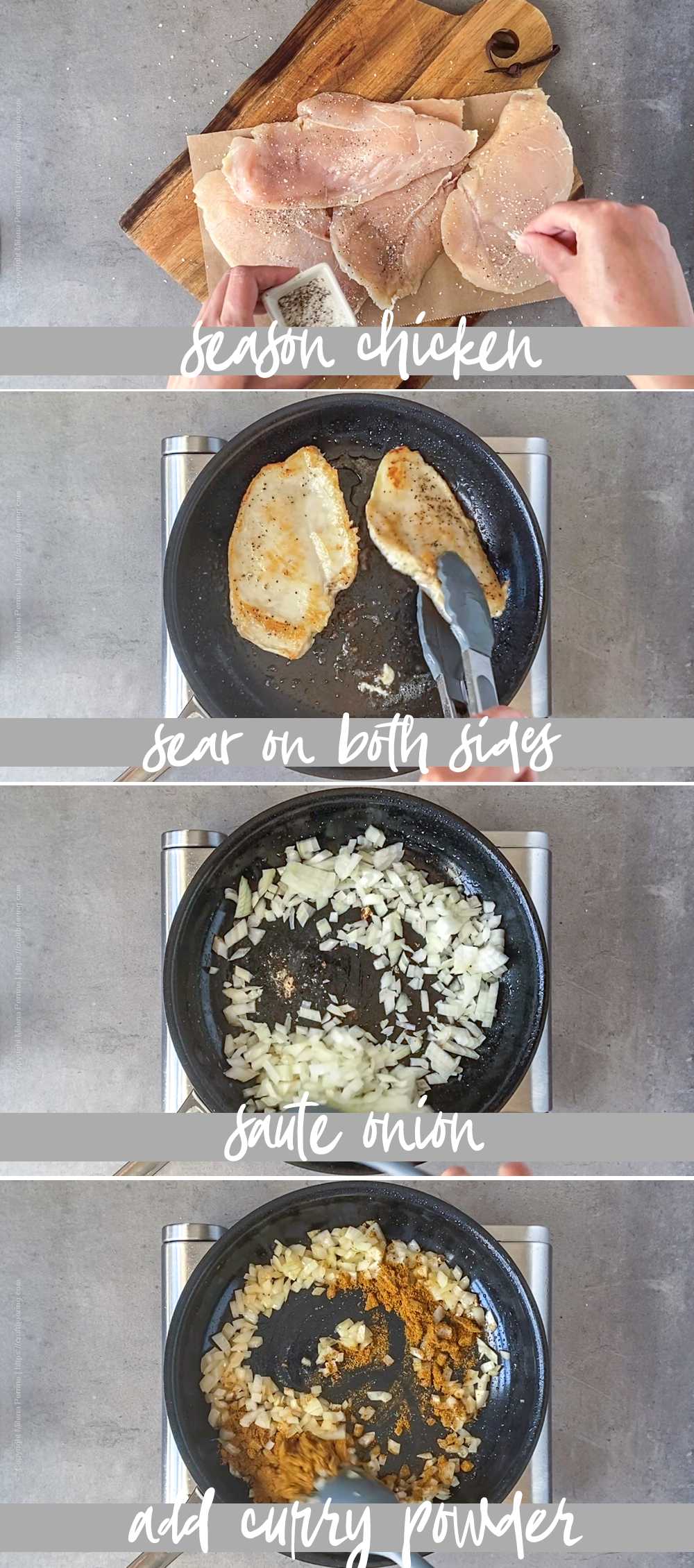
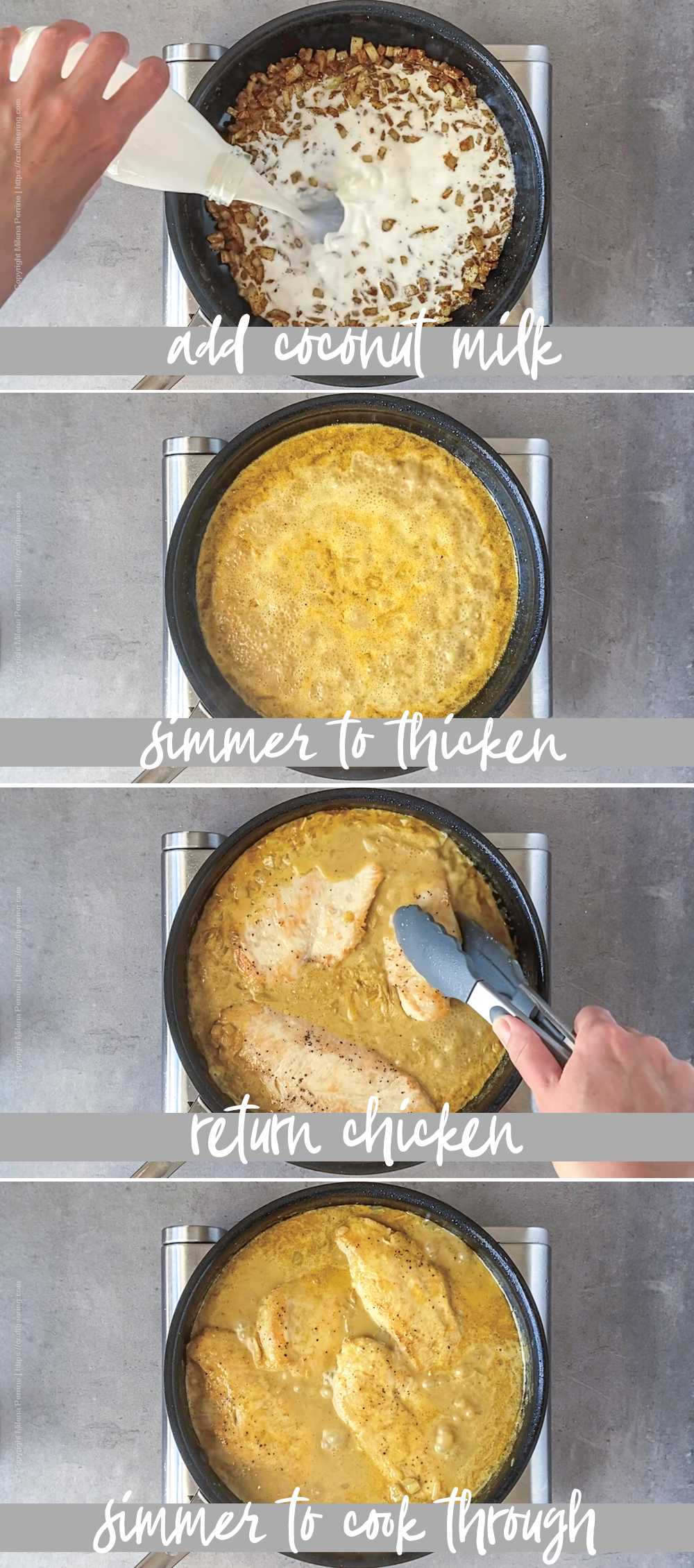
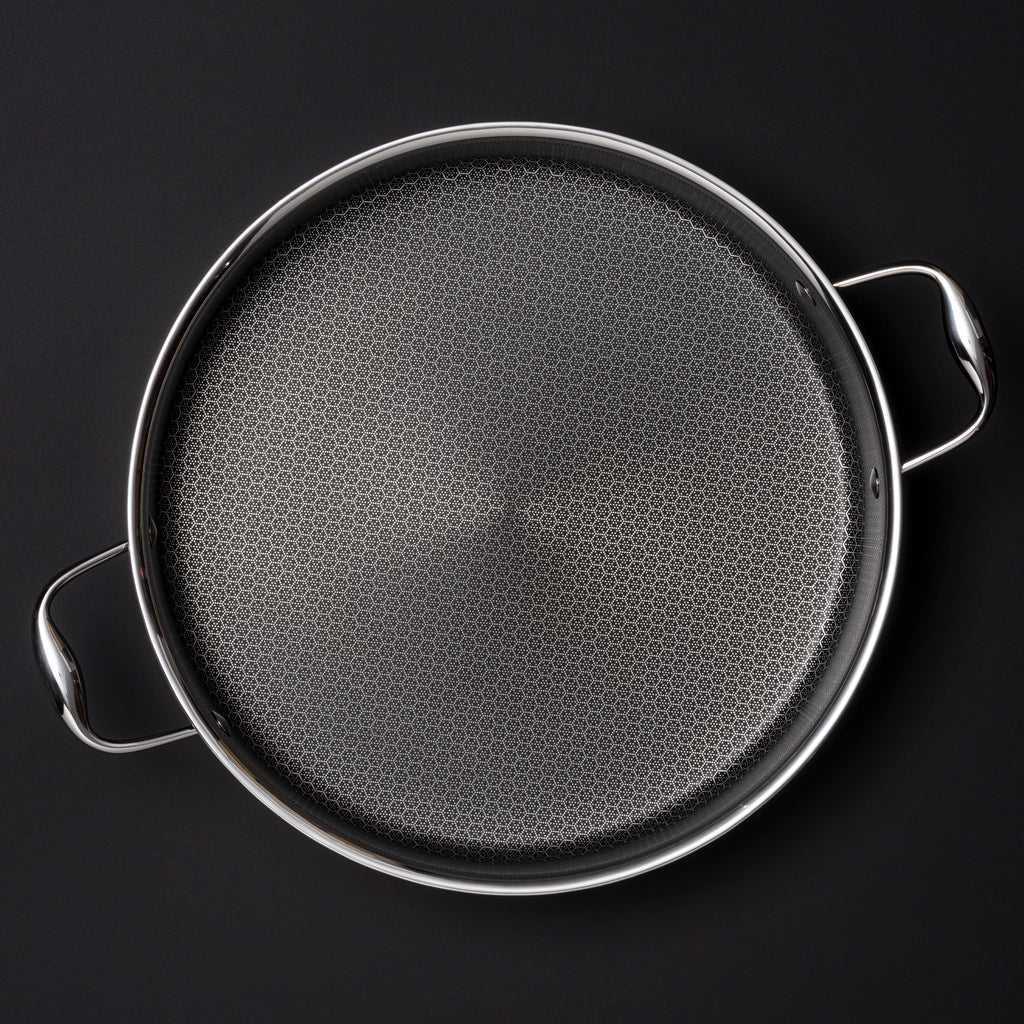
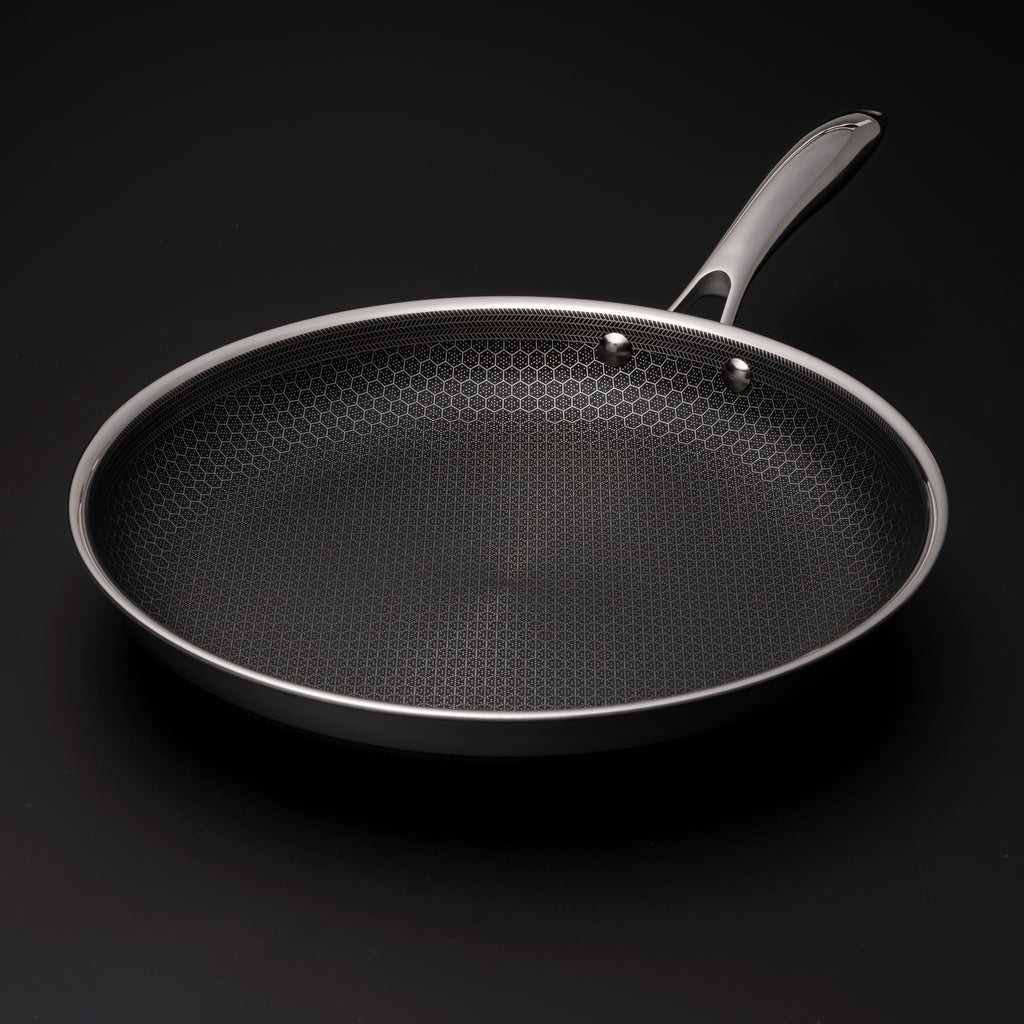
Jennifer @ Seasons and Suppers says
I love a good curry and especially a good, simple curry. This one looks perfect and such a versatile sauce to use for so many things!
CraftBeering says
Thank you!